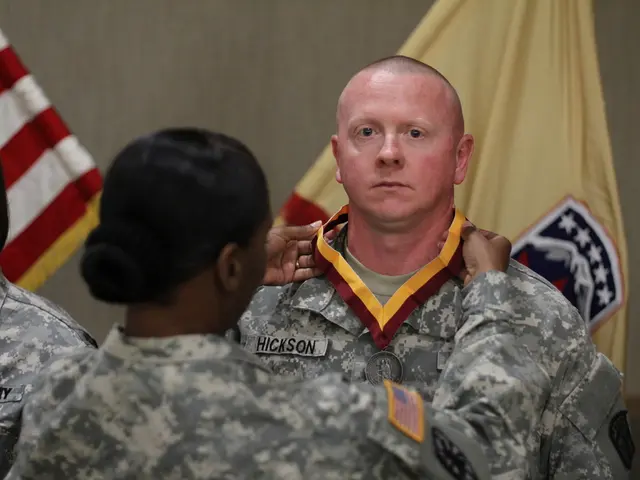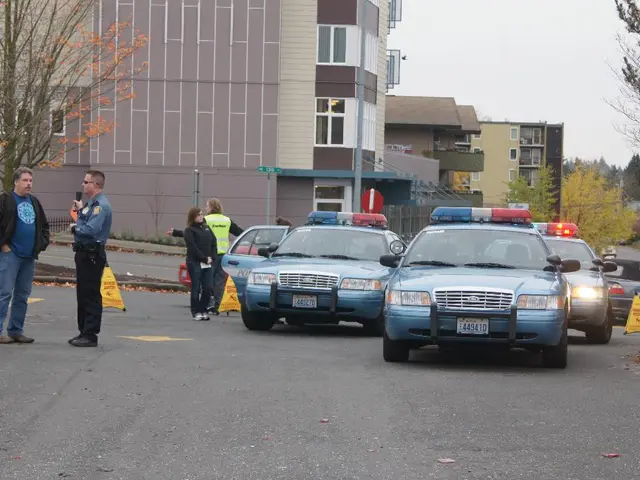Boeing's Dreamliner In Spotlight After Air India Crash
Dreamliner's Security Flaws Raised by Boeing Employee: Potential Security Threats Revealed
The Air India crash of a Boeing 787 in India has fueled a renewed debate about the aircraft's safety, as whispers of improper assembly and systemic issues within the production pipeline resurface.
Warning Bells Ringing
Sam Salehpour's Disclosures
- Engineer's Concerns: Sam Salehpour, a current Boeing engineer with a 17-year stint at the company, flagged concerns over the dubious alignment of Dreamliner's fuselage parts.
- Shortcuts and Long-Term Risks: He implied that a practiced used by workers, which involves them jumping on plane parts, aimed at forcing alignment during assembly, results in temporary deformations, leading to gaps that could compromise the structural integrity.
- Affected Aircraft: Reportedly, more than a thousand 787s worldwide are impacted.
- Overlooked Warnings: Despite raising the alarm for over three years starting in 2020, Salehpour felt his concerns went unheeded. He also alleged retaliation, such as being transferred to the 777 program after speaking out.
John Barnett's Testimony
- Retired Quality Control Engineer: John Barnett, who retired in 2017, also warned about production pressures leading to substandard parts and defects in the aircraft's oxygen systems.
- Faulty Oxygen Systems: He alleged that up to one in four breathing masks might not work during an emergency.
- Scrap Bin Parts: Barnett also claimed that, in some instances, defective parts were taken from scrap bins and fitted to planes under construction.
- Tragic Ending: Before his sudden death in March 2024, Barnett took legal action against Boeing and testified in a whistleblower lawsuit.
Ongoing Investigations
- FAA's Involvement: The Federal Aviation Administration (FAA) halted Dreamliner deliveries for almost two years from 2021 due to gaps in fuselage joints, echoing the concerns raised by whistleblowers. The FAA has continued to monitor the situation, with whistleblowers' attorneys asserting that agency officials were taken aback to learn that manufacturing issues were far from resolved.
- Boeing's Defenses: Boeing has maintained steadfastly that the 787 is safe, citing extensive testing that found no immediate safety risks. It also argues that announced manufacturing changes will have no impact on the airframe's durability or safe lifespan.
- Recent Developments: The Air India crash in Ahmedabad has reignited focus on the concerns surrounding the 787, even though the crash's exact cause is still under investigation. U.S. safety officials, including the NTSB and FAA, have pledged their support to India's Aircraft Accident Investigation Bureau in unraveling the mystery of the crash.
Additional Info- Boeing has sold more than 2,500 aircraft of the 787 model to airlines or leasing companies, with 1,189 delivered. Forty-seven aircraft were sold to Air India.- The crashed Air India aircraft reportedly lost altitude rapidly, with evidence of a fireball upon impact.
The revelations by whistleblowers have cast a shadow over Boeing's safety culture and manufacturing oversight, with ongoing investigations and legal challenges underscoring persistent worries despite Boeing's assurances.
[1] "Air India Boeing 787 Dreamliner Crash: A Timeline of Events." NDTV.com. [2] "Boeing 787 Dreamliner whistleblower alleges safety issues, labor retaliation." CNN.com. [3] "Boeing 787: Congressional subcommittee investigating safety concerns." The Hill. [4] "Whistleblowers Allege Workplace Retaliation on Boeing." The Wall Street Journal.
- The community policy regarding the Boeing 787 Dreamliner's safety is under scrutiny following the Air India crash, with concerns about improper assembly and systemic issues within the production pipeline arising.
- Vocational training in the aerospace industry is crucial, as evidenced by the allegations that workers may have resorted to jumping on plane parts to force alignment during assembly, compromising structural integrity.
- Finance and business experts are closely monitoring the ongoing legal challenges and investigations into Boeing, with the future of vocational training and manufacturing processes in the aerospace sector at stake.
- Amidst political debates on policy-and-legislation, general news outlets are reporting on the Boeing 787 Dreamliner crisis, shedding light on the importance of transparency and accountability in the aerospace and technology industries.






